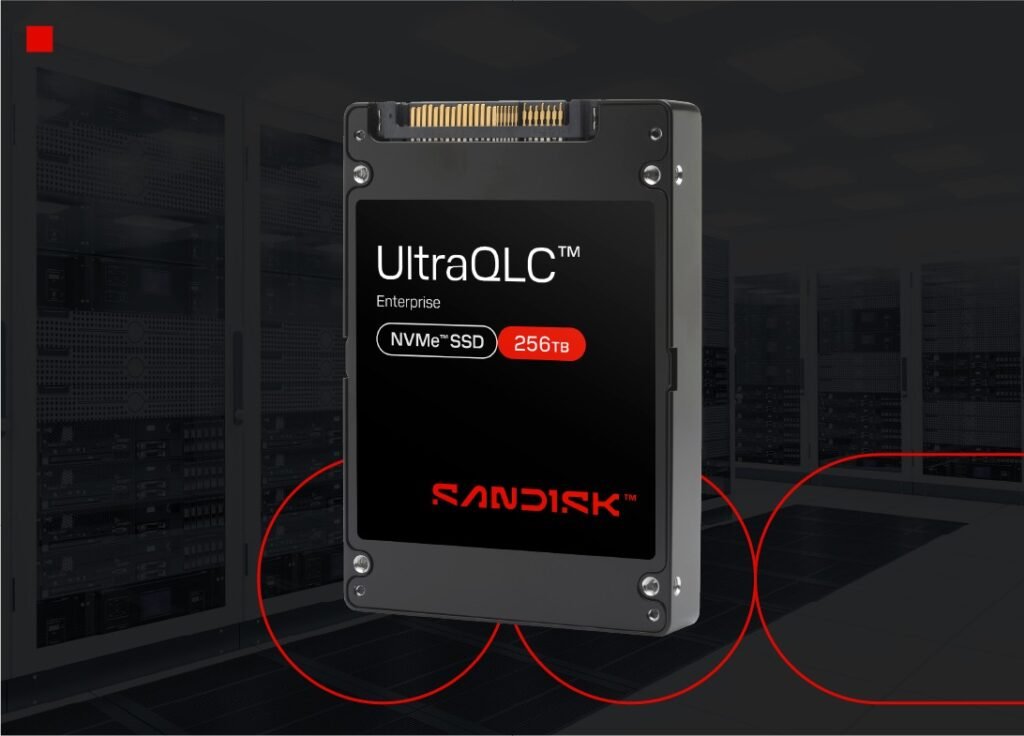Sandisk has unveiled a high-capacity 256TB NVMe enterprise solid-state drive (SSD), developed using the company’s new UltraQLC platform. The UltraQLC platform incorporates BiCS8 QLC CBA NAND flash memory, custom controllers, and advanced system optimizations, resulting in increased storage capacity, performance, and power efficiency for enterprise applications.
According to Sandisk, the 256TB NVMe SSD is intended for AI-driven, data-intensive workloads such as data ingestion, preparation, and large-scale AI data lakes, where high performance and power efficiency are essential. The company states that the device is aimed at improving total cost of ownership for high-capacity applications in hyperscale cloud environments.
Khurram Ismail, Chief Product Officer at Sandisk, commented on the launch, highlighting the role of flash storage in enabling high-performance workloads in the AI era. Ismail noted that the UltraQLC platform is the result of extensive development aimed at achieving greater capacity and performance while maintaining efficiency.
Also read: WD_BLACK SN8100 NVMe SSD 2TB Review
The Sandisk UltraQLC 256TB NVMe SSD introduces several new technologies designed to enhance speed, reliability, and efficiency for demanding workloads. Notable features include:
- Direct Write QLC, which allows power-loss safe writes without SLC buffering
- BiCS8 2Tb QLC die, providing higher storage density in a compact form factor
- Power optimization via Dynamic Frequency Scaling, which is projected to increase performance by up to 10% for a given power level
- A scalable multi-core controller to support high throughput and endurance for large-capacity drives
- A Data Retention (DR) profile that is projected to reduce DR recycles by up to 33 percent, potentially improving reliability and reducing power consumption
Sandisk announced that both the SN670 128TB NVMe SSD and the UltraQLC 256TB NVMe SSD will be available in the U.2 form factor in the first half of 2026. Additional form factors are expected later in the year.



3 Comments
Pingback: boAt Launches Stone Arc Series: A New Range of Portable Speakers
Pingback: Battlefield 6: The Comeback of a Generation
Pingback: OpenAI Launches ChatGPT-5: Faster, Smarter, More Accurate